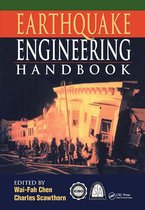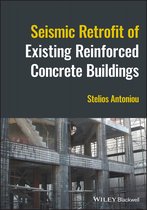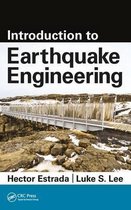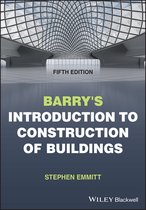Why Do Buildings Collapse in Earthquakes? Building for Safety in Seismic Areas Building for Safety in Seismic Areas
Afbeeldingen
Sla de afbeeldingen overArtikel vergelijken
- Engels
- Hardcover
- 9781119619420
- 19 augustus 2021
- 304 pagina's
Samenvatting
Learn from the personal experience and insights of leading earthquake engineering specialists as they examine the lessons from disasters of the last 30 years and propose a path to earthquake safety worldwide
Why Do Buildings Collapse in Earthquakes?: Building for Safety in Seismic Areas delivers an insightful and comprehensive analysis of the key lessons taught by building failures during earthquakes around the world. The book uses empirical evidence to describe the successes of earthquake engineering and disaster preparedness, as well as the failures that may have had tragic consequences.
Readers will learn what makes buildings in earthquake zones vulnerable, what can be done to design, build and maintain those buildings to reduce or eliminate that vulnerability, and what can be done to protect building occupants. Those who are responsible for the lives and safety of building occupants and visitors—architects, designers, engineers, and building owners or managers—will learn how to provide adequate safety in earthquake zones. The text offers useful and accessible answers to anyone interested in natural disasters generally and those who have specific concerns about the impact of earthquakes on the built environment.
Readers will benefit from the inclusion of:
- A thorough introduction to how buildings have behaved in earthquakes, including a description of the world’s most lethal earthquakes and the fatality trend over time
- An exploration of how buildings are constructed around the world, including considerations of the impact of climate and seismicity on home design
- A discussion of what happens during an earthquake, including the types and levels of ground motion, landslides, tsunamis, and sequential effects, and how different types of buildings tend to behave in response to those phenomena
- What different stakeholders can do to improve the earthquake safety of their buildings
The owners and managers of buildings in earthquake zones and those responsible for the safety of people who occupy or visit them will find Why Do Buildings Collapse in Earthquakes? Building for Safety in Seismic Areas essential reading, as will all architects, designers and engineers who design or refurbish buildings in earthquake zones.
WHY DO BUILDINGS COLLAPSE IN EARTHQUAKES?
Learn from the personal experience and insights of leading earthquake engineering specialists as they examine the lessons from disasters of the last 30 years and propose a path to earthquake safety worldwide
Why Do Buildings Collapse in Earthquakes?: Building for Safety in Seismic Areas delivers an insightful and comprehensive analysis of the key lessons taught by building failures during earthquakes around the world. The book uses empirical evidence to describe the successes of earthquake engineering and disaster preparedness, as well as the failures that may have had tragic consequences.
Readers will learn what makes buildings in earthquake zones vulnerable, what can be done to design, build and maintain those buildings to reduce or eliminate that vulnerability, and what can be done to protect building occupants. Those who are responsible for the lives and safety of building occupants and visitors—architects, designers, engineers, and building owners or managers—will learn how to provide adequate safety in earthquake zones. The text offers useful and accessible answers to anyone interested in natural disasters generally and those who have specific concerns about the impact of earthquakes on the built environment.
Readers will benefit from the inclusion of:
- A thorough introduction to how buildings have behaved in earthquakes, including a description of the world’s most lethal earthquakes and the fatality trend over time
- An exploration of how buildings are constructed around the world, including considerations of the impact of climate and seismicity on home design
- A discussion of what happens during an earthquake, including the types and levels of ground motion, landslides, tsunamis, and sequential effects, and how different types of buildings tend to behave in response to those phenomena
- What different stakeholders can do to improve the earthquake safety of their buildings
The owners and managers of buildings in earthquake zones and those responsible for the safety of people who occupy or visit them will find Why Do Buildings Collapse in Earthquakes? Building for Safety in Seismic Areas essential reading, as will all architects, designers and engineers who design or refurbish buildings in earthquake zones.
Productspecificaties
Inhoud
- Taal
- en
- Bindwijze
- Hardcover
- Oorspronkelijke releasedatum
- 19 augustus 2021
- Aantal pagina's
- 304
Betrokkenen
- Hoofdauteur
- Robin Spence
- Tweede Auteur
- Emily So
- Hoofduitgeverij
- Wiley-Blackwell
Overige kenmerken
- Product breedte
- 173 mm
- Product hoogte
- 20 mm
- Product lengte
- 246 mm
- Studieboek
- Nee
- Verpakking breedte
- 173 mm
- Verpakking hoogte
- 20 mm
- Verpakking lengte
- 246 mm
- Verpakkingsgewicht
- 703 g
EAN
- EAN
- 9781119619420
Je vindt dit artikel in
- Taal
- Engels
- Boek, ebook of luisterboek?
- Boek
- Beschikbaarheid
- Leverbaar
- Studieboek of algemeen
- Studieboeken
Kies gewenste uitvoering
Prijsinformatie en bestellen
De prijs van dit product is 99 euro en 99 cent.- Prijs inclusief verzendkosten, verstuurd door bol
- Ophalen bij een bol afhaalpunt mogelijk
- 30 dagen bedenktijd en gratis retourneren
- Dag en nacht klantenservice
Rapporteer dit artikel
Je wilt melding doen van illegale inhoud over dit artikel:
- Ik wil melding doen als klant
- Ik wil melding doen als autoriteit of trusted flagger
- Ik wil melding doen als partner
- Ik wil melding doen als merkhouder
Geen klant, autoriteit, trusted flagger, merkhouder of partner? Gebruik dan onderstaande link om melding te doen.








